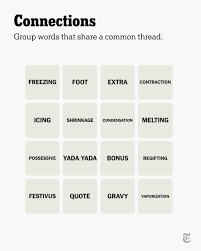Understanding Festivus Yada Yada: A Unique Holiday Tradition

Introduction to Festivus Yada Yada
Festivus Yada Yada has gained popularity as a light-hearted holiday celebrated by many during the festive season. Originating from an episode of the iconic television show ‘Seinfeld’, Festivus has evolved into a cultural phenomenon that resonates with those seeking a break from traditional holiday stressors. Its unconventional nature allows participants to engage in humour while acknowledging the contemporary challenges of the holidays.
The Origins of Festivus
Festivus was first introduced in the 1997 episode ‘The Strike’, written by Dan O’Keefe. The holiday is celebrated on December 23rd and is characterised by its unique traditions, including the assembly of a plain aluminium pole, the Airing of Grievances, and Feats of Strength. The phrase ‘yada yada’, a recurring expression from the show, signifies a conversational filler, mirroring the casual and often humorous atmosphere associated with Festivus.
Traditions of Festivus Yada Yada
Key traditions of Festivus include:
- The Aluminium Pole: Unlike the traditional Christmas tree, Festivus is celebrated with a simple aluminium pole, which has become a symbol of the holiday’s anti-commercialism.
- Airing of Grievances: Participants gather to discuss how they have been disappointed by friends and family over the past year, often leading to light-hearted banter and laughter.
- Feats of Strength: The celebration culminates in physical challenges, typically a wrestling match, traditionally led by the head of the household.
- Festivus Dinner: While not obligatory, a Festivus dinner is often prepared, featuring meals that are as ordinary as the celebration itself, adding to the unfussy nature of the event.
Current Trends and Social Media Influence
In recent years, the celebration of Festivus has expanded into social media platforms, where individuals and groups share their own interpretations and celebrations of the holiday. From Festivus memes to themed parties, the holiday is observed by various communities, embracing the spirit of levity and connection. The annual ‘Festivus Pole’ has even been erected in some public places, drawing attention to this quirky celebration.
Conclusion: The Significance of Festivus Yada Yada
Festivus Yada Yada serves as a reminder that the festive season can be about laughter, relatability, and a break from the pressures often associated with traditional holidays. As people navigate their busy lives, this unique celebration provides a space for fun and reflection without the burden of holiday expectations. As the popularity of Festivus continues to grow, it stands as a testament to the human need for connection and amusement, making it an integral part of contemporary cultural celebrations.
You may also like

The Significance of Christmas Jumper Day 2023

Celebrate Christmas Jumper Day 2025: A Festive Tradition
